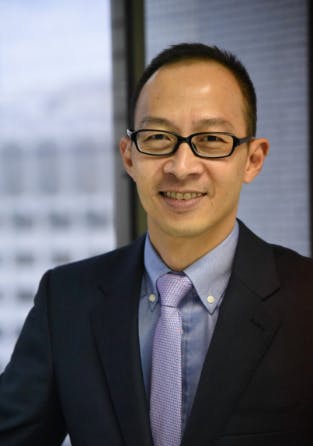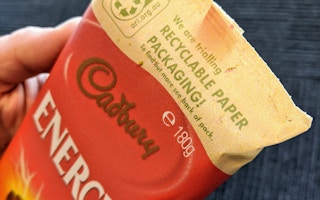Twelve years ago, a tainted milk scandal broke in China after 16 infants in Gansu province were diagnosed with kidney stones. They had been fed milk that had been deliberately contaminated with a toxic industrial compound called melamine to boost its apparent protein content. The milk sickened an estimated 300,000 babies and led to six reported deaths.
To continue reading, subscribe to Eco‑Business.
There's something for everyone. We offer a range of subscription plans.
- Access our stories and receive our Insights Weekly newsletter with the free EB Member plan.
- Unlock unlimited access to our content and archive with EB Circle.
- Publish your content with EB Premium.
Known as China’s biggest food safety scandal, it prompted food and beverage giants in the region to set up Food Industry Asia (FIA), an association that they hoped would protect their interests in the face of such major scandals.
The FIA also cites the incident as a reason why the industry has no immediate plans to eliminate plastic and considers it to be the safest form of packaging.
“The reality is, we are quite a while away from an alternative material that can serve its purpose, as plastics have. [Plastic] packaging protects against contamination, especially in Southeast Asian rural areas where there aren’t even any household storage [options] like refrigerators,” said Edwin Seah, FIA’s head of sustainability and communications. The Singapore-headquartered association counts among its members Coke, Nestlé and Unilever, which have been named among the worst offenders for polluting the world’s oceans with plastic.

Edwin Seah, head of sustainability and communication, Food Industry Asia (FIA)
What about the Chinese government’s ambitious plan unveiled last month to reduce single-use plastic, which would see non-degradable plastic bags banned in places such as supermarkets in major cities by the end of the year? As with similar measures set out by Malaysia and some cities in India, Indonesia and the Philippines, Seah is sceptical about how effective it will be.
“It’s great that there are plastic bans but those bans need to be targeted, implemented and enforced,” said the former head of the Singapore Environment Council, a non-profit that has spoken up against transboundary haze in the region.
In an interview, Seah tells Eco-Business why he thinks plastic bans alone cannot solve Asia’s chronic throwaway culture, why waste-to-energy plants should be considered as an alternative to recycling, and what he thinks of global brand audits.
Malaysia, some Indian states, Philippine and Indonesian cities and, most recently, China have imposed or announced bans on single-use plastics. What strategy would you propose instead of a ban?
We have to factor in the growing population and the lack of solid infrastructure to meet that growing population.
A report by the US-ASEAN Business Council says that in Asean alone, there will be close to 100 million more people by 2030. By that time, more than half of the population is expected to be middle-class, with more spending power, more consumption and more waste generated.
You need to plan your infrastructure to meet these increases. We’re not quite sure if banning alone is going to help, which is why we also have to step up waste collection, recycling and proper disposal of items that cannot be recycled.
A targeted ban is more effective than a blanket ban. I’m just saying that banning single-use plastic in general would be a challenge. [Governments must] consider specifically banning low-value plastics that are not needed, like polyvinyl chloride or PVCs, which cannot be recycled.
China has to scale up solid waste management by putting more bins on the street to enhance collection of waste and provide infrastructure.
The problem is not in the material itself or the plastic packaging. It is how people deal with it, post-consumption.
The Chinese as well as Thai governments also have to allow the use of recycled materials in packaging because they are not yet open to [recycled] food-grade packaging. When it comes to food-related stuff, there is the issue of hygiene, stringent regulation and culture. For example in Indonesia, [food manufacturer] Danone has not been given the green light to sell their 100 per cent recycled mineral water bottles. In some parts of Asia, they have that issue of products being halal [adhering to Islamic law].
In Vietnam and Indonesia, there are few waste disposal facilities, while the Philippines has a lot of waste disposal bins but they don’t have enough landfills to store the waste.
Is part of the goal of the F&B industry to be able to do without packaging and go for zero waste? Is it possible?
The food and beverage industry cannot do without packaging. In the [tropical] climate of Southeast Asia, and where there is a complex distribution system and a lack of proper storage facilities, we need packaging. For example, the Philippines is made up of so many islands that distributing something from Manila to another province could take days. It is not realistic to go for zero waste just yet, is it?
Global brands in the food and beverage industry always find themselves at the top of the list of the world’s worst plastic polluters. What is the biggest obstacle among corporates in overcoming plastic packaging?
The so-called top polluters are food and beverage brands and therefore it supports the case that we need to step up solid waste management—recycling, collection, disposal, and prohibit littering.
The problem is not in the material itself or the plastic packaging. It is how people deal with it, post-consumption. But global brands are rising to the challenge. They are at the forefront of innovation. Danone launched its 100 per cent recycled plastic bottles for mineral water that does away with extra outer plastic labelling. Mondelēz, which makes Cadbury chocolate, is exploring the use of paper packaging. In Singapore, fast-moving consumer goods are coming together to look at solutions in the context of food packaging … functional ways to prevent contamination, keeping the food fresh, combined with food safety and food waste.
“
The problem is not in the material itself or the plastic packaging. It is how people deal with it, post-consumption.
At the end of the day, [the goal] is not to discard plastics as a packaging material but [to look at] how consumers can better manage it, its use, and its post-consumption life.
The same global brands have been making efforts to curb waste through recyclable packaging. Is recycling really the only solution?
Recycling is a key solution but it’s not the only solution. It requires intervention across the supply chain, whether it’s using less plastic, adding waste collection, and recycling. We need to look at the context of the current plastic and waste crisis that Southeast Asia is facing. We should look not only for immediate solutions but short and long-term solutions. For immediate solutions, countries have to start looking at waste-to-energy technology.
We are all looking for the perfect solution, but waste-to-energy plants have been used in several countries and have proven to be effective in terms of managing waste. It is not an ideal solution but if you have a situation where you do not have proper waste collection and recycling plants, then it is the next best thing. Recent technology has made it more efficient.
It is not just about electricity; it gives social and economic benefits. It provides electricity to communities with no access to energy, and it provides jobs by training a new workforce to operate the waste-to-energy plants.
How can the government and F&B industry collaborate to resolve the plastic crisis?
FIA, together with the Singapore Economic Development Board, Nestlé and P&G, has set up a Circular Materials Lab which provides a pre-competitive platform for FMCG companies (not just food companies and not just FIA members) to come together to identify urgent packaging challenges and accelerate research and discovery of sustainable packaging solutions.
After a series of sessions and meetings in 2019, polyhydroxyalkanoates (PHA) plastic was identified as a potential material for flexible packaging that is both marine-safe and marine-biodegradable. Feedstock for PHA can come from food waste, plastic waste and carbon-dioxide capture. Innovation is one of the key aspects where the industry and government can help to tackle plastic pollution.
What do you think of global brand audits, where environmental groups run clean-up operations in beaches, homes, streets and parks? Do they provide an accurate reflection of which companies pollute the most?
Brand audits are a good check and balance. Companies have made public commitments and someone needs to verify that. They give confidence to consumers that the products they buy are sustainable.
But if you look at previous reports that have identified the top companies in terms of packaging waste, they are not very scientific. I can walk around the beach and pick up 10 items, and maybe four of them are unbranded, so I can eliminate them, then I record the branded products as the biggest polluters.
I would say their efforts are better placed with a less antagonistic approach. [Instead] let’s come together to come up with more productive solutions.








